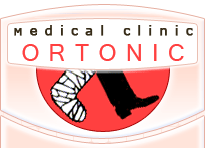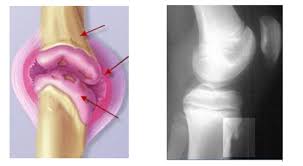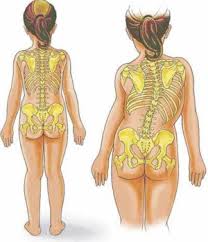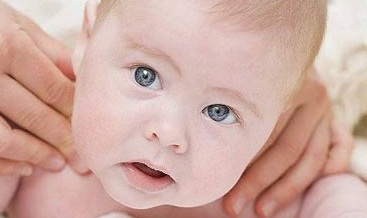Perthes disease
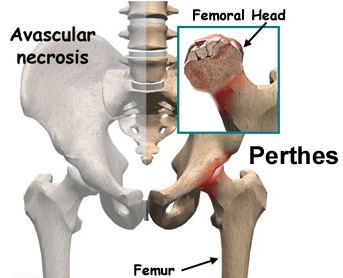
Perthes disease
Perthes disease is a pathological process characterized by impaired blood flow and subsequent necrosis of the femoral head. It is a fairly common disease and accounts for about 17% of the total number of osteochondropathy. Suffer from children aged 3 to 14 years. Boys are 5-6 times more likely than girls, but girls tend to have a more severe course. Perhaps both one-sided and two-sided defeat, with the second joint usually suffering less and recovering better.
Symptoms
In the early stages there are non-intensive dull pain when walking. Usually the pains are localized in the hip region, but in some cases, pain can occur in the knee or the entire leg. The baby begins to limp slightly, falls on a sore leg or flips it. As a rule, during this period the clinical manifestations are so poorly expressed that the parents do not even know how to turn to the orthopedist, and explain the symptoms of the disease with a bruise, increased stress, the consequence of an infectious disease, etc.
With further destruction of the head and the appearance of an impression fracture, the pain sharply increases, lameness becomes apparent. Soft tissues in the area of the joint swell. The restriction of movements is revealed: the patient can not turn his leg outward, the rotation, flexion and extension in the hip joint are limited. Walking is difficult. There are vegetative disorders in the distal parts of the diseased limb - the foot is cold, pale, and its sweating is increased. It is possible to raise the body temperature to a low-grade figure. Subsequently, the pain becomes less intense, resting on the leg is restored, but lameness and restriction of movements can persist. In some cases, a limb is shortened. Over time, there is a clinic of progressive arthrosis.
Diagnostics
The most important study, which is crucial in the diagnosis of Perthes disease, is the radiography of the hip joint. If this disease is considered, not only images in standard projections are performed, but also an X-ray in the projection of Lauenstein. X-ray picture depends on the stage and severity of the disease.
Treatment
Children aged 2-6 years with mild symptomatology and minimal changes on radiographs should be observed in pediatric orthopedics; special therapy is not required. In other cases, patients are referred for treatment to the orthopedic department followed by outpatient care. Conservative therapy is long, lasting at least a year (an average of 2.5 years, in severe cases up to 4 years).
Treatment includes:
1. Full relief of the limb.
2. Imposition of skeletal traction, use of plaster casts, orthopedic structures and functional beds to prevent deformation of the femoral head.
3. Improvement of blood supply to the joint with the use of medication and non-medicament methods.
4. Stimulation of processes of resorption of destroyed tissues and restoration of bone.
5. Maintaining muscle tone.
Children with Perthes disease for a long time remain inactive, which often provokes the appearance of excessive weight and the subsequent increase in the load on the joint. Therefore, all patients are prescribed a special diet to prevent obesity. At the same time the food should be full, rich in proteins, fat-soluble vitamins and calcium. During the whole period of treatment, massage and special complexes of exercise therapy are used. With the use of skeletal traction and gypsum dressings, which exclude the possibility of active movements, the muscles are electrostimulated.
Children are prescribed angioprotective and chondroprotective agents in the form of an oral and intramuscular injection. Starting from the second stage, patients are referred to UHF, diathermy, electrophoresis with phosphorus and calcium, mud therapy and ozocerite. The load on the leg is permissible only after the radiologically confirmed fracture fusion. At the fourth stage, patients are allowed to perform active exercises, on the fifth stage they use a complex of exercise therapy to restore muscles and the volume of movements in the joint.
Surgical interventions for Perthes' disease are shown in severe cases (the appearance of severe deformity, subluxation of the thigh) and only in children over 6 years of age. Typically, a rotational transposition of the acetabulum according to Salter or corrective medializing osteotomy of the thigh is performed. In the postoperative period, physiotherapy, exercise therapy, massage, chondroprotective and angioprotective agents are prescribed.
People who have undergone Perthes' disease, regardless of the severity of the disease, are advised to exclude excess loads on the hip joint throughout life. Contraindicated jumping, running and lifting weights. Swimming and cycling are allowed. It is necessary to regularly practice therapeutic gymnastics. Do not choose work associated with heavy physical exertion or a prolonged stay on your feet. It is necessary to undergo periodic rehabilitation treatment in outpatient settings and sanatorium conditions.iomechanical disorders in the joint.